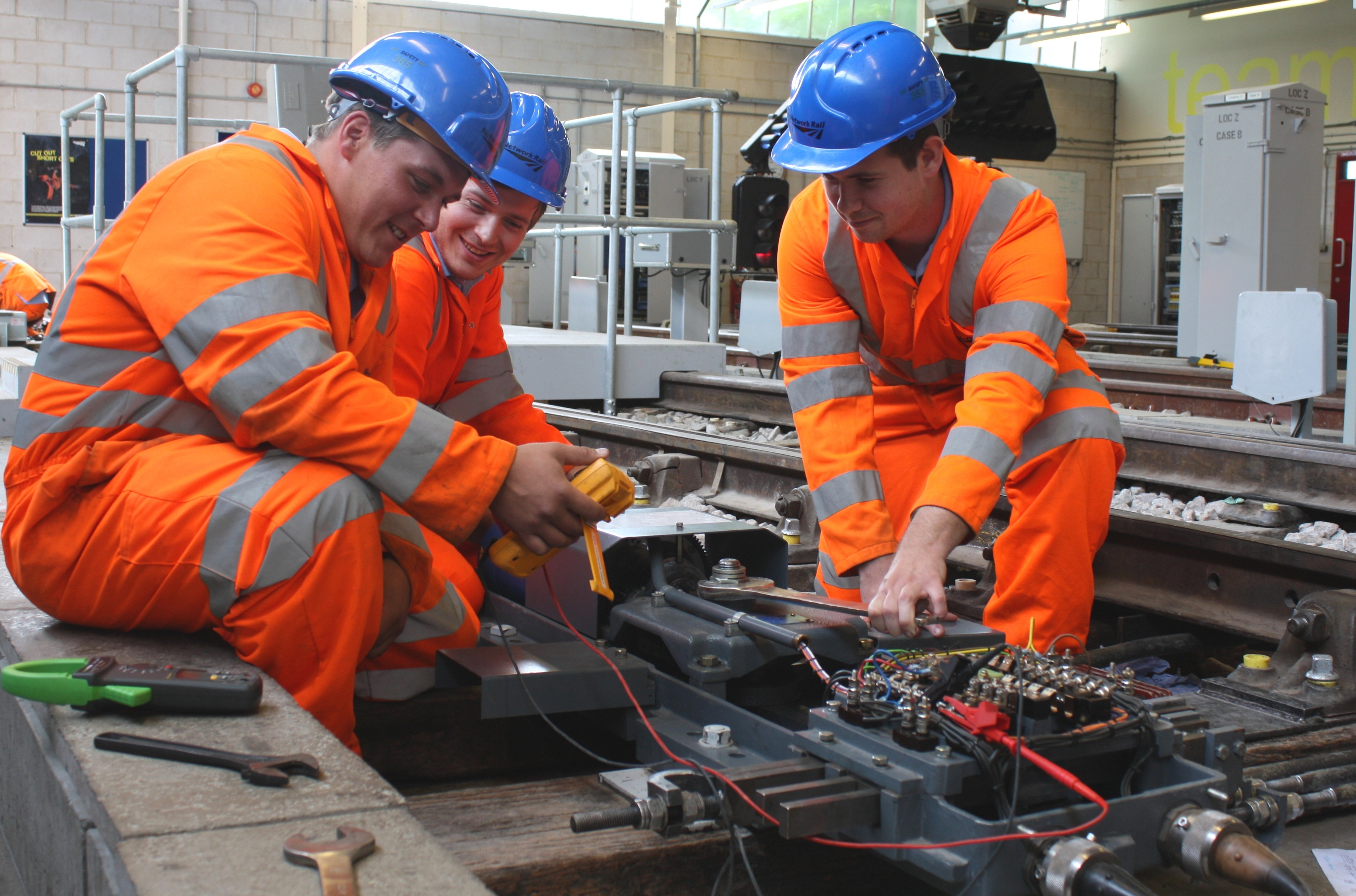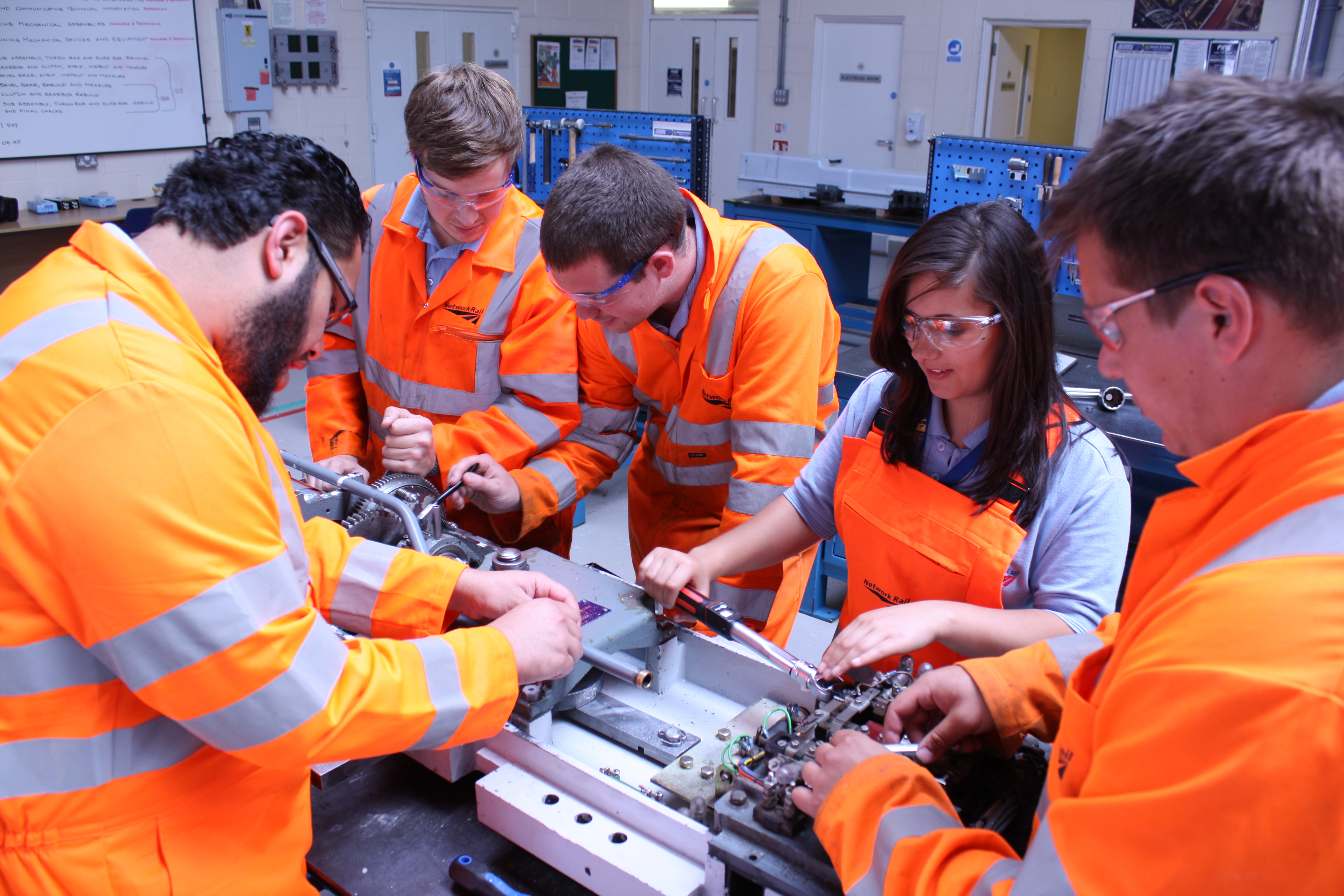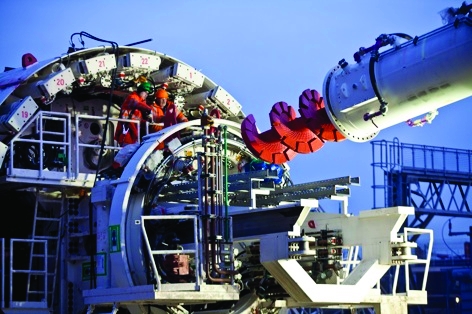Signal failures, disruptions and delays; the glamour that once surrounded British railways seems to have been lost in the overcrowded carriages that now greet passengers. ‘We struggle to attract and recruit engineers because we’re not seen as one of those sexy industries,’ said Michelle Palin, recruitment manager at Network Rail. ‘But the reality is very different.’
Last month, Network Rail announced the biggest investment in rail infrastructure since the Victorian era. It plans to spend £37.5bn to meet the predicted 400 million extra passenger journeys by 2020. Work is gathering pace at Crossrail and Thameslink, which will together provide much needed capacity across London. Meanwhile the government is firming up plans for national mainline electrification and the roll out of Europe’s fastest railway, High Speed 2.

Given the scale of the plans, it’s an exciting time to be an engineer in the sector. For instance, Crossrail is currently tunnelling through London’s underground city, the oldest and one of the most complex in the world. At its closest approach, the tunnel will be less than a metre away from an existing structure- an incredible feat given the tunnel boring machines have a minimum turning radius of 250m.
Ian McMillan has been working for Costain-Skanska for the past two years. He believes the breadth of rail projects offers unrivalled opportunities. ‘I’m working on the Paddington Crossrail Station main box where interfaces with the existing heritage structures are proving an exciting every-day challenge- I’m constantly working on and around grade-I listed buildings, a lot of which were built by the great Brunel himself.’
These projects, however, could be held back if the sector is unable to fill the skills gap. The current rail workforce is made up of around 84,500 engineers. Nearly 70 per cent work in track, almost half are semi-skilled, and only 4.4 per cent are female. According to a recent report by the National Skills Academy for Railway Engineering (NSARE), a major concern is the high-age profile of people working in traction and rolling stock.
NSARE estimates a need for between 1,600 and 2,000 new people in the next five years in signalling and telecommunications, with over 30 per cent of these people being at technician level or above. Around 1,000 engineers will be needed for electrification and plant in the next few years, which is equivalent to 30 per cent of the current workforce.

Rail union RMT has voiced long-standing concerns that the shortage of skilled engineers will threaten the timetables for the UK’s ambitious rail projects. RMT general secretary Bob Crow blames a lack of investment in training and apprenticeships. ‘The figures coming from the NSARE make a mockery of the McNulty Rail Review plans,’ he said. ‘This is a wake-up call for the government, stop the rail job cuts and start investing in training and apprenticeships, or watch your plans collapse into chaos.’
Major UK rail companies have stepped up efforts to address this. In October 2011, Crossrail launched the Tunnelling and Underground Construction Academy (TUCA) to train engineers in excavation, underground construction and infrastructure. Over the course of the Crossrail project, TUCA aims to train around 3,500 new entrants and existing contractors. In addition to training, Crossrail has committed to delivering at least 400 apprentices through its supply chain.
‘Any major project or company’s aims on apprenticeships are also only as good as the buy-in from their contractors and supply chain,’ said Crossrail’s Talent and Resources director, Valerie Todd. ‘Half the battle is in ensuring your suppliers and partners support what you are trying to achieve. We looked to engage our contractors right from the start, ensuring that not only were they supportive of our aims but that employment and skills targets were a contractual requirement.’

Using a similar approach, Network Rail runs a three-year apprenticeship scheme focuses on five engineering programmes: track, signals, electrification and plant, signal design, and telecoms. Apprentices spend their first year training alongside the Royal Navy at Europe’s largest engineering training facility at HMS Sultan in Hampshire. According to Palin, the age profile of apprentices is diverse, with the oldest apprentice during the last intake being in his late 30s. She added that quite often Network Rail receives applications for apprenticeships from people who have already been to university.
For Palin, however, awareness of the benefits of apprenticeships, she said, need to be conveyed to people much sooner in the education system. ‘I think schools are too hung up on what percentage of their kids go to university,’ she said. ‘They are perhaps pushing towards university where actually a different option may be better suited for them. I don’t see the careers advice in schools changing at all…I think Connexions as a careers advice tool for school kids is an absolute horrendous nightmare.’
There is, however, some good news on the horizon. Latest figures by sector skills council, Semta, reveal that overall apprenticeships in engineering and advanced manufacturing in England have increased by more than 85 per cent since 2010. With the skills gap a concern across the engineering disciplines, rail will have its work cut out for it if it’s to attract the right candidates. For organisations such as Network Rail and Crossrail, apprentices are a practical way of highlighting the exciting challenges awaiting engineers in the rail sector.
‘There is more money being invested in rail now that there has been for the past 50 years,’ said Palin. ‘The network is undergoing a period of complete overhaul in terms of technologies that it is using and introducing into the railway.’ Government policy has put the processes in place, but it will be engineers and apprentices who are at the vanguard of this change. If enough engineers can be inspired, then the railways may just become the source of national pride they once were.

Red Bull makes hydrogen fuel cell play with AVL
Many a true word spoken in jest. "<i><b>Surely EVs are the best solution for motor sports</b></i>?" Naturally, two electric motors demonstrably...